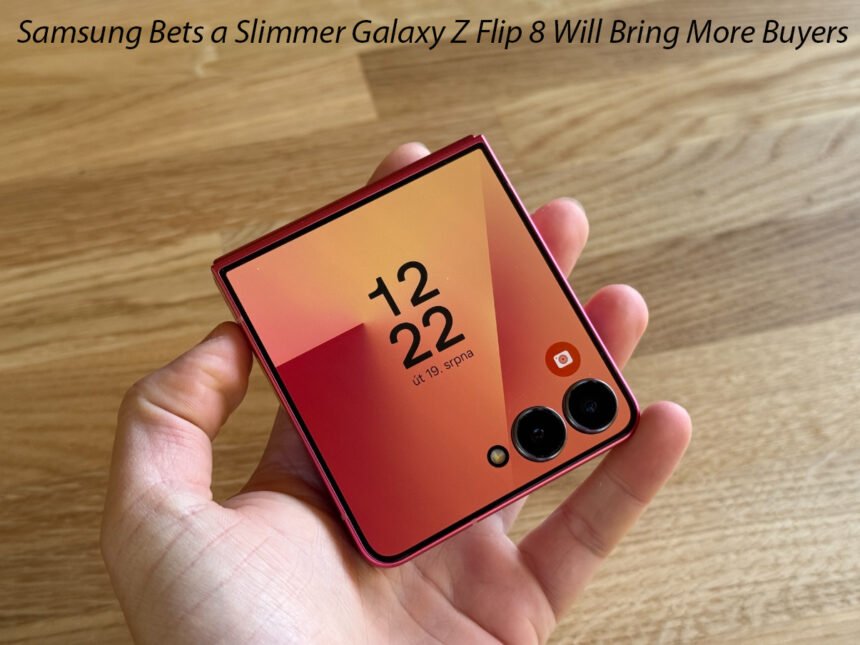Samsung is once again betting big on innovation, this time by making its latest foldable phone the Galaxy Z Flip 8, slimmer and more refined than ever. The company believes that this design change could be the key to capturing a wider audience and driving stronger sales in the foldable smartphone market, which remains a niche but rapidly growing segment.
A Sleeker Design to Attract New Users
Samsung has been leading the foldable smartphone industry for several years, but competition from companies like Motorola, Honor, and Huawei has increased pressure to innovate. With the Galaxy Z Flip 8, Samsung focuses on one clear goal: slimming down the device without compromising durability or performance.
According to company insiders, the Flip 8 is thinner when folded and lighter in the hand, addressing one of the most common complaints about previous models. This design shift aims to make the device feel more like a traditional smartphone while keeping the signature clamshell experience that many users love.
Early impressions suggest that the new form factor could make it easier to slip into pockets or small handbags, a detail that Samsung hopes will appeal particularly to fashion-conscious consumers and those who prioritize portability.
Improved Durability and Display Technology
Beyond its thinner profile, Samsung has invested in strengthening the Galaxy Z Flip 8’s hinge mechanism and display protection. The device uses an upgraded Ultra Thin Glass (UTG) layer designed to withstand more folds over time, and a reinforced aluminum frame for added sturdiness.
The inner display now offers smoother refresh rates, enhancing responsiveness during gaming or multitasking. Samsung also ensured a clear and vivid color output under bright sunlight, a challenge many foldables face. The company’s engineers claim the hinge can now handle well over 300,000 folds, making it one of the most durable designs yet in the foldable space.
Camera and Software Enhancements
While the hardware gets slimmer, Samsung also boosts the camera system and software intelligence in the Galaxy Z Flip 8. The dual-camera setup has improved sensors for better low-light photography, and AI integration has become more advanced.
Samsung’s One UI 7 features specialized capabilities for foldable screens, enabling users to take selfies with the main camera, record videos in Flex Mode, or multitask effortlessly. The software experience aims to blend creativity and practicality, helping users make the most of the foldable format.
Competing for Market Dominance
Despite Samsung’s dominance in the foldable segment, its market share has started to shrink slightly as rivals introduce cheaper or more experimental models. Motorola’s Razr 50 Ultra and Huawei’s Pocket 2, for example, have gained traction for their sleek looks and competitive pricing. By emphasizing design and premium performance, Samsung hopes to reaffirm its leadership.
Analysts say that a slimmer Galaxy Z Flip could attract those who were previously hesitant to adopt foldables due to bulkiness or weight. The company also continues to work closely with carriers and retailers to make financing options more accessible, encouraging new buyers to experience the technology firsthand.
A Strategic Move Toward the Future
For Samsung, the Galaxy Z Flip 8 is more than just a smartphone it represents a statement about the company’s vision of the future of mobile design. Foldables remain a small slice of the global smartphone market, but their growth potential is undeniable. If the Flip 8 succeeds, it could set a new standard for balancing elegance, durability, and performance.
As Samsung prepares for the product’s global launch, excitement is building among tech enthusiasts and loyal fans alike. By betting on slimmer aesthetics and smarter functionality, Samsung is signaling that foldable phones are not just futuristic gadgets; they are ready to become the new mainstream in mobile technology.











